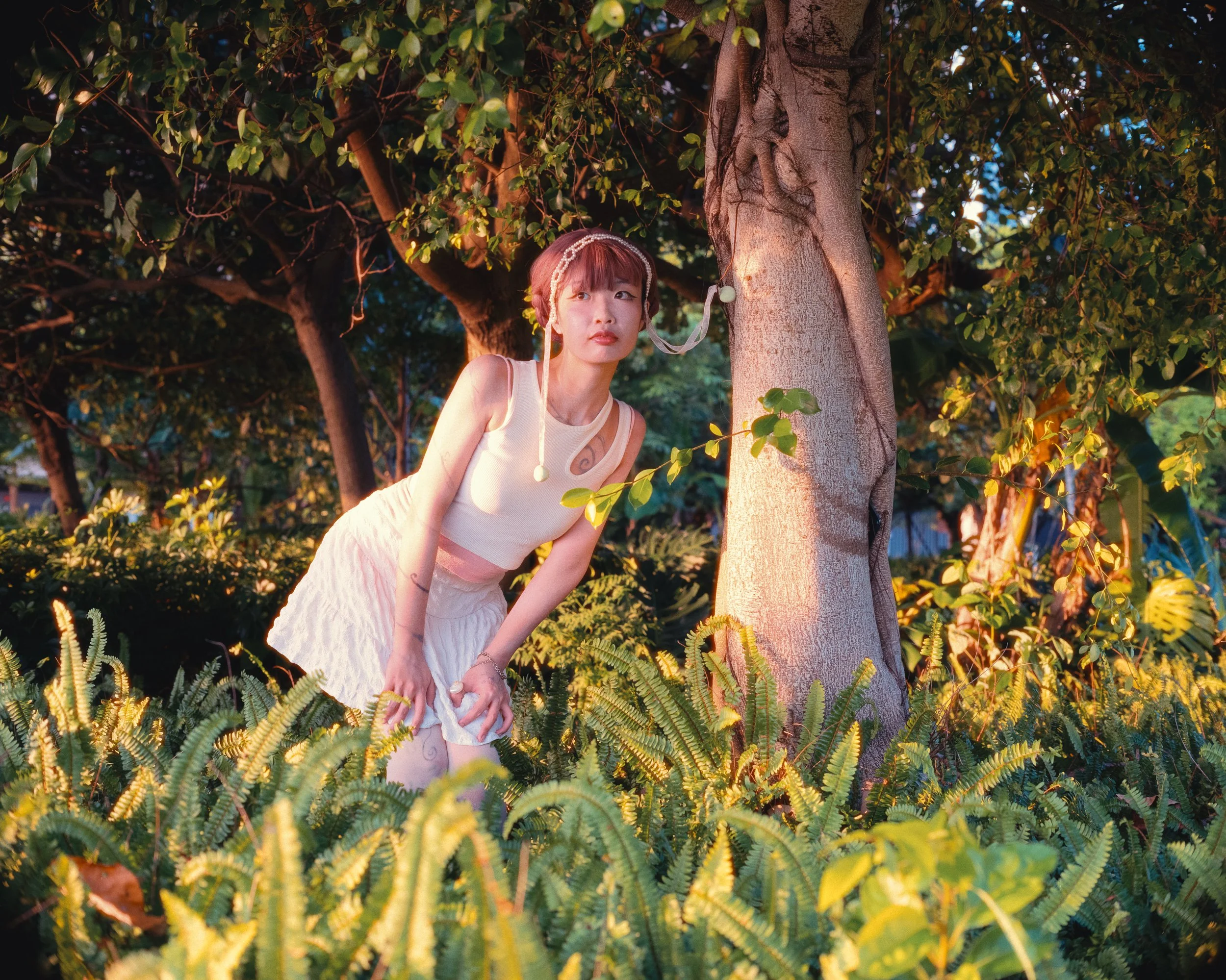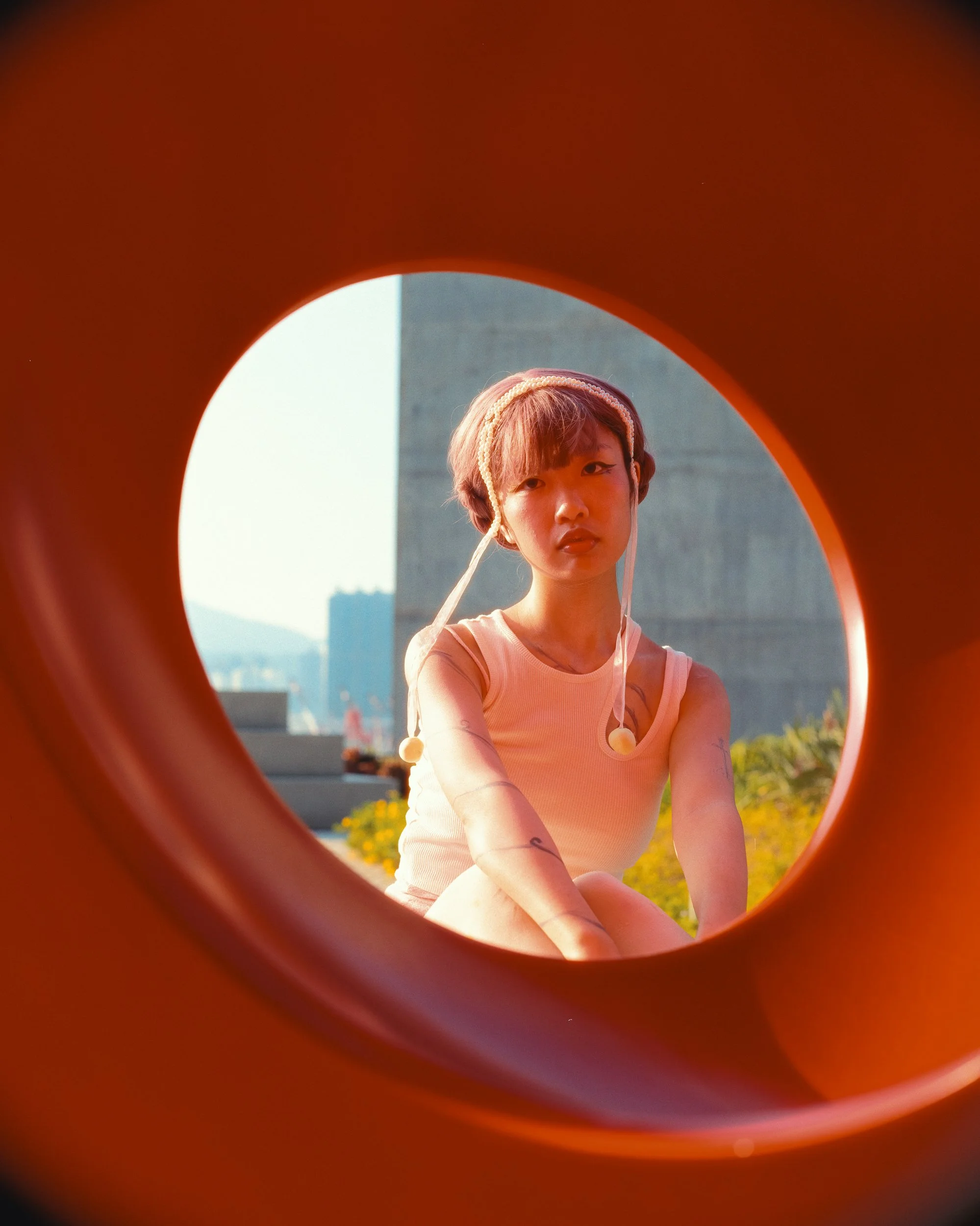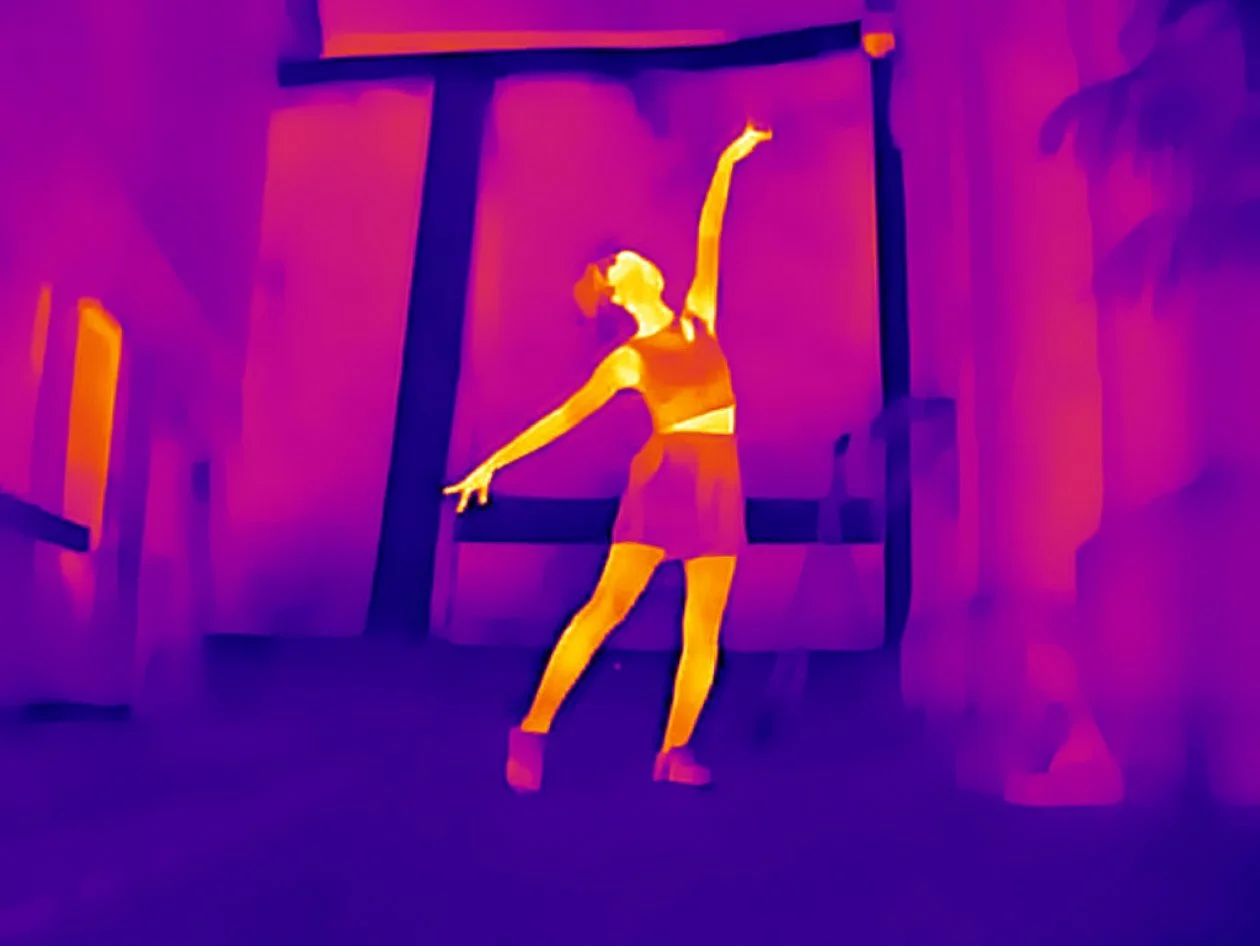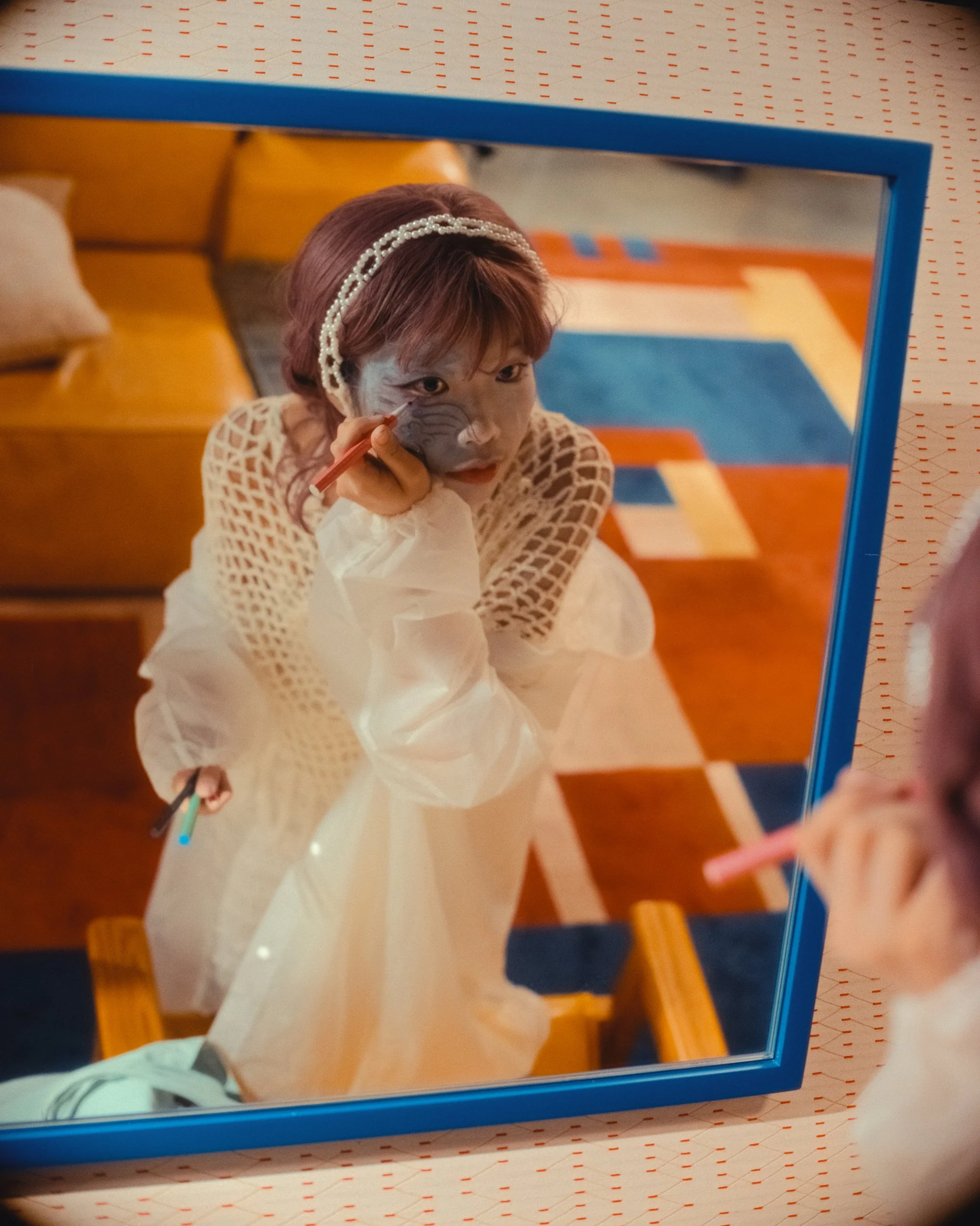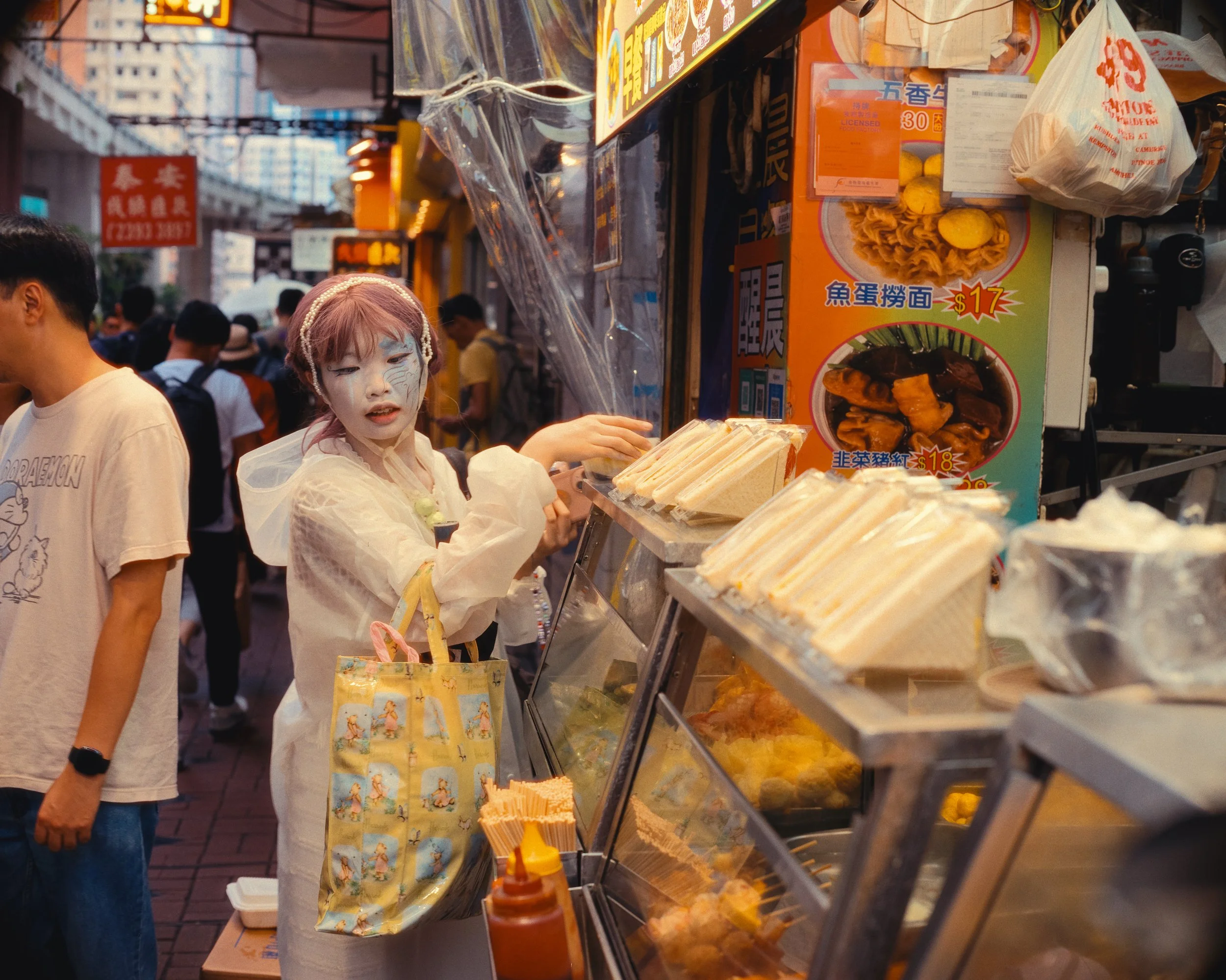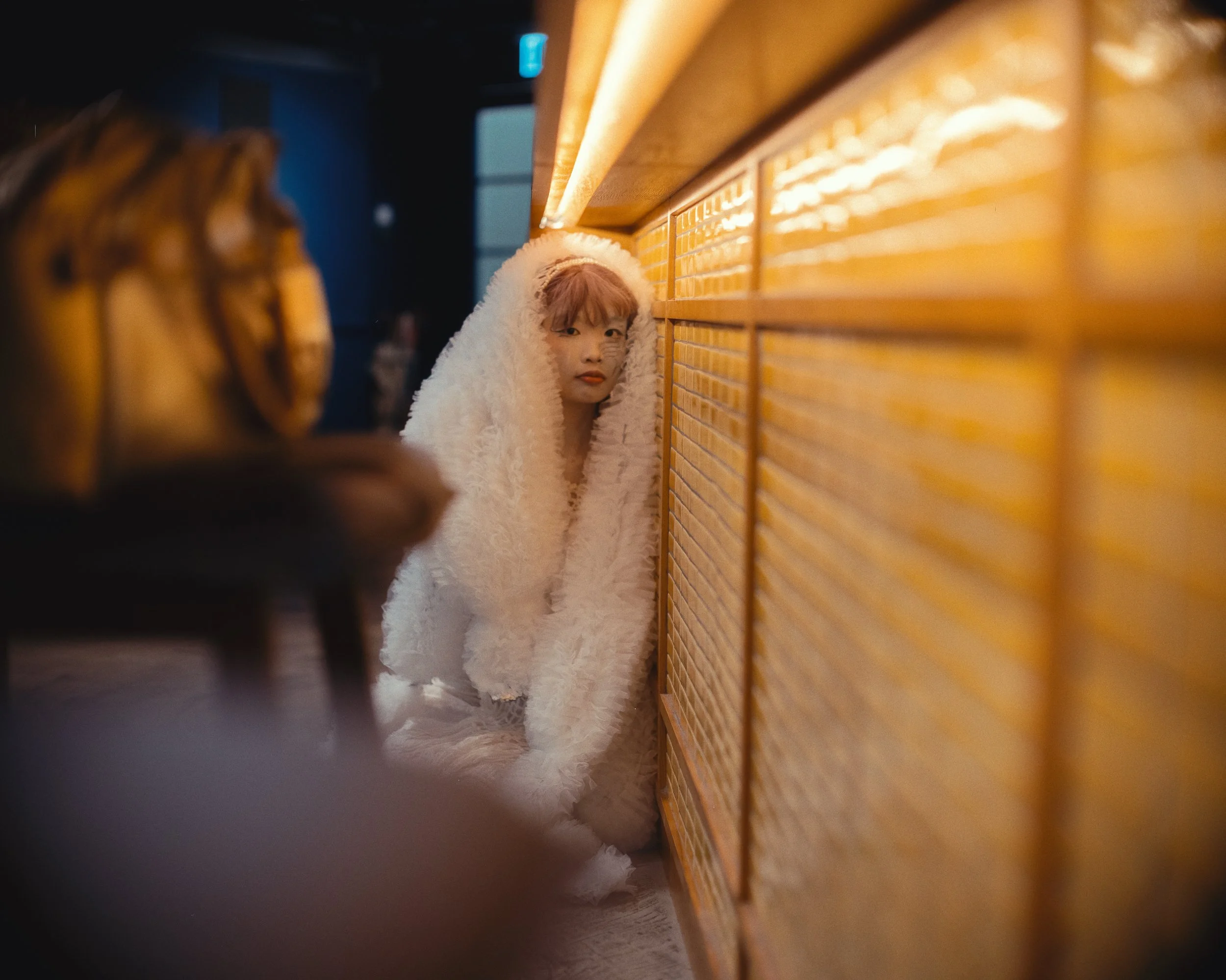The Ascent of the Abandoned: Voidpunks Transcending into Gods and Goddesses in Hong Kong
My long-term documentary photography project, "We Are the Things Monsters Love," embarks on a radical fusion of ancient Chinese mythology and Voidpunk counterculture to capture the zeitgeist of Hong Kong’s marginalized youth. This journey recently found a new depth and direction during my Director's Fellowship at the International Center of Photography in Documentary Practice: Visual Storytelling.
In one of my classes focused on visual strategies, my teacher, Alexey Yurenev, posed a profound prompt that became a guiding force for this project:
"As a documentary photographer, consider how you might work at the edges of the archive—with what is missing, misrepresented, or never recorded. Begin with a gap: a personal, familial, or collective memory that resists documentation, yet asks to be made visible. Identify the gap and go out to make work/find archival material to support it/create fictional archive to disrupt etc. It is a carte blanche."
To help frame this exploration, Alexey also assigned a pivotal reading to me: "The Foreign Object - The Floating Life of Fallen Angels: Unsettled Communities and Hong Kong Cinema" from the book "Avoiding the Subject - Media, Culture and the Object" by Justin Clemens and Dominic Pettman, published by Amsterdam University Press.
Fallen Angels, Qu Yuan's Plea, and the Echoes of Abandonment
Clemens and Pettman describe Wong Kar Wai's cinematic gem, Fallen Angels as capturing the "hyper-alienated cultural climate of a city which has been cut loose from its previous colonial moorings, and now floats uncannily between the political grids which link Chinese and British history." This concept of "floating identity," "unsettlement," and "profane limbo" became a potent lens through which to explore the profound sense of abandonment experienced by both historical figures and contemporary youth.
Nine Songs by Zhao Mengfu
My "gap" in the archive now centers on the poignant plea of Qu Yuan, the ancient Chinese poet and aristocrat from the State of Chu during the Warring States period. Exiled by the kings who no longer accepted him, Qu Yuan poured his heart into the poem Nine Songs" (Jiu Ge / 九歌). This wasn't just poetry; it was a fervent complaint to the nine gods and goddesses, lamenting that they, too, had seemingly abandoned him, and craving their divine love. This resonates deeply with Voidpunks, who often feel abandoned or misunderstood by society, navigating a contemporary world that dismisses them as "monstrous."
Another significant missing gap in Hong Kong's history, which I learned from the Voidpunk oracle, Holok Chen, is the oral tradition of the Weitou tribe. Considered among the first settlers of Hong Kong, this was a matriarchal tribe with a unique tradition: brides would sing sorrowful "bridal laments" during their weddings, expressing their pain and sorrow. These songs, still used as oral history today, perfectly capture the feelings of contemporary Voidpunks in Hong Kong—a profound sense of abandonment and displacement that Charlotte, my collaborator, deeply felt before her own transformation.
Charlotte's Transmutation: Becoming The Cloud Goddess (Yun-zhong Jun) and Embracing Lament
This is where the project transcends historical interpretation and becomes a living, breathing act of defiant self-reinvention. I collaborated with Charlotte, a Voidpunk artist in Hong Kong, who powerfully connected with one of the deities from "Nine Songs": 'The Lord within the Clouds' (Yun-zhong Jun). Charlotte intuitively perceived this traditionally ambiguous figure as a goddess, a preference deeply informed by the historical matriarchal roots of tribes like the Weitou and the raw emotional honesty of their bridal laments. This re-gendering of the divine validates her own lived experience and the project's spirit of reclaiming narratives.
To inspire Charlotte's transformation, I provided her with an excerpt from David Hawkes' translation of The Songs of the South: An Ancient Chinese Anthology of Poems by Qu Yuan and Other Poets, detailing Yun-zhong Jun's elusive nature:
"This god would be wholly unknown to us but for an entry in the monograph on sacrifices in Si-ma Qian’s ‘History’... Wang Yi tells us that Yun-zhong Jun was the Cloud God... I cannot help thinking that the ‘Yun-zhong’ of the god’s title is in some way connected with the Yun-zhong Mountain in Shanxi... Perhaps the god worshipped by the shamans from Shanxi was both the god of Yun-zhong Mountain and a rain-bringer...
1 We have bathed in orchid water and washed our hair with perfumes, And dressed ourselves like flowers in embroidered clothing. The god has halted, swaying, above us, Shining with a persistent radiance.
5 He is going to rest in the House of Life. His brightness is like that of the sun and moon. In his dragon chariot, dressed in imperial splendour, Now he flies off to wander round the sky. The god had just descended in bright majesty,
10 When off in a whirl he soared again, far into the clouds. He looks down on Ji-zhou and the lands beyond it; There is no place in the world that he does not pass over. Thinking of that lord makes me sigh And afflicts my heart with a grievous longing."
Inspired by this passage and archival images, I created a "cheat sheet" for Charlotte to guide her creative process in crafting her new Voidpunk persona:
YUN-ZHONG JUN (雲中君 - The Cloud Goddess)
Essence: Mysterious, ephemeral, elusive, atmospheric, hidden power.
Transmutative Power: The power to exist unbound by fixed forms, to flow effortlessly, and to wield the quiet strength of the unseen.
Makeup: Hazy, diffused, and ethereal. Colors: Soft greys, pale blues, misty whites, translucent pastels. Techniques: Blended, smudged lines, dewy look, shifting patterns mimicking cloud formations.
Clothes: Layered, flowing, and indistinct. Materials: Sheer organza, chiffon, thin knits, distressed lace, translucent plastics. Silhouettes: Loose, draped, multi-layered, appearing to float.
Accessories & Jewelry: Ephemeral & Found Objects: Charms that tinkle like rain, small, translucent plastic elements, feathers. Water & Air Motifs: Droplet-shaped jewelry, pieces that look like condensed vapor.
A Note from the Photographer: Bridging Worlds with AI
As a neurodivergent artist with aphantasia – the inability to visualize mental imagery – the path from archival texts to the vibrant, contemporary visions of Voidpunk deities was a unique challenge. My imagination, while rich in concepts, often lacks the visual "eye." This is where AI became an indispensable collaborator, helping me bridge the gap between ancient archive and modern imagination.
After over 100 failed attempts with various Stable Diffusion workflows, I finally discovered the perfect technique: ControlNet Edge Mapping. By using canny edge detection to meticulously extract the ink outlines from traditional scroll images, I was able to give the AI precise instructions, allowing it to interpret and reimagine the Cloud Goddess as modern-day Voidpunk in Hong Kong. The images you see in this guide are the fruits of this intricate process – a fusion of ancient wisdom, personal neurodiversity, and cutting-edge technology.
This creative process was documented through a series of photoshoots capturing Charlotte's own unique journey of transformation, echoing the profound sorrow and ultimate transcendence found in the Weitou bridal laments:
Pre-Transformation
I first photographed Charlotte as she saw herself before fully embodying the goddess, channeling the deep feelings of abandonment. She wore a simple white dress and adorned herself with two long ribbon threads, each carrying a light green ball. These, she explained, were her "alien antennas," helping her connect to the sacred energy of the divine, drawing energy from the trees and flowers around her. This shoot visually evoked the emotional weight of songs like "The Bride Takes Leave From Her Home," where the bride laments: "When the cage opens, we are torn apart, my sister in one place, I in the other." and "In the ninth month, white chrysanthemums smile. When they smile, I'm filled with sorrow."
The Transmutation
Next, we conducted a shoot using a thermal camera. This was a crucial step to visually represent the unseen energy transfer and the very act of "transmutation" as Charlotte absorbed and processed the inspiration, blurring the lines between her non-human/alien Voidpunk self and the emerging divine.
Amazingly, during this shoot, sudden thundershowers appeared, creating a powerful resonance with Weitou lament Song IV: "Sixth, I cry for good times. So we have favorable winds and rain."
The cloud literally became rain, showering Charlotte as sacred energy, a direct physical manifestation of her transformation into the Goddess of the Cloud.
Inspiration mood board
I created more reference images for Charlotte using Stable Diffusion, to help her refine her new look.
The Cloud Goddess Manifests
Finally, Charlotte took all this creative process and fully transcended into her new Voidpunk persona as the Goddess of the Cloud.
I then photographed her with my medium format camera, capturing the ethereal, powerful, and utterly unique manifestation of her vision, a defiant counterpoint to the abandonment and sorrow.
This multi-stage photographic process, utilizing AI for inspiration, an analog medium format camera for the final portraits, and thermal imaging for the energetic transition, directly responds to Alexey Yurenev's prompt to "make work" and "create fictional archive to disrupt." It’s an act of turning dehumanization into sacred power, offering a new folklore for Hong Kong’s outcasts. I also plan to create AI-generated songs with these bridal lament lyrics, set to the melodies of ancient Chinese musical instruments, further bridging the past and present, the unheard and the amplified.
This project embodies the zeitgeist by mirroring Hong Kong’s tension between erased history and precarious futures. With global resonance, it speaks to universal struggles for belonging. Through collaborative learning with Voidpunks, scholars, and the public, we co-create narratives that challenge what it means to be "human," proving that here, monsters are not metaphors—they’re blueprints for survival.







